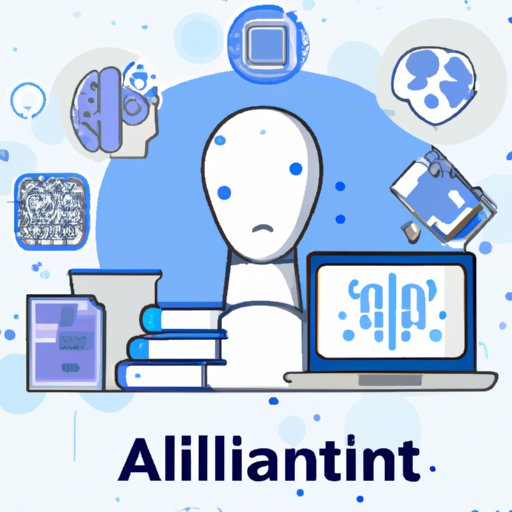Introduction
Artificial intelligence (AI) is one of the most rapidly growing fields in technology today. With its potential to revolutionize industries, it’s no wonder that many are eager to learn about it. But for those who don’t have access to formal education or training programs, self-studying artificial intelligence can be daunting. This article will provide an overview of the steps necessary to self-study artificial intelligence, from researching available resources to experimenting with existing AI tools.
Research Available Resources on Artificial Intelligence
The first step in self-studying AI is to research the available resources. There are a variety of textbooks, online courses, tutorials, and other documents that can help you learn the fundamentals of AI. Textbooks such as “Artificial Intelligence: A Modern Approach” by Stuart J. Russell and Peter Norvig provide a comprehensive overview of the subject. Online courses such as Coursera’s “Introduction to Artificial Intelligence” can also provide a valuable introduction to the field. Additionally, there are numerous tutorials available online that cover specific AI topics in depth.
Practice Coding Basic AI Algorithms
Once you’ve researched the basics of AI, it’s time to start practicing coding. There are three main categories of AI algorithms: supervised learning, unsupervised learning, and reinforcement learning. Supervised learning involves using labeled data to train a model to make predictions. Unsupervised learning tasks involve clustering data without labels. Reinforcement learning is a type of machine learning where the agent learns through trial and error. It’s important to practice coding basic algorithms in each of these categories in order to gain a better understanding of AI.

Utilize Online Communities and Forums
Online communities and forums can be a great resource when self-studying AI. They provide a platform for asking questions, sharing experiences, and connecting with others who share a common interest. Additionally, they offer an opportunity to learn from the experiences of others and benefit from their collective knowledge.

Set Up Your Own AI Project
After gaining a solid understanding of the fundamentals of AI, it’s time to set up your own project. This requires breaking down the task into manageable steps and then working through them one by one. Begin by identifying the problem you want to solve and researching the necessary data. Then, choose the appropriate algorithm and implement it. Finally, evaluate the results and adjust the parameters accordingly.
Experiment with Existing AI Tools and Applications
There are numerous existing AI tools and applications available for experimentation. Popular tools include Google’s TensorFlow, Microsoft’s Azure Machine Learning, and Amazon’s AWS Deep Learning. Examples of AI applications include autonomous vehicles, facial recognition systems, and natural language processing systems.

Follow News and Updates in the Field of AI
One of the best ways to stay current on the latest developments in AI is to follow news and updates in the field. Sources of news and updates include industry magazines, online publications, and social media accounts. Following these sources regularly will give you a better understanding of the state of the industry and help you identify new opportunities.
Attend Conferences and Meetups
Attending conferences and meetups is another great way to stay on top of the latest trends in AI. These events provide an opportunity to network with industry professionals, exchange ideas, and learn from one another. Additionally, attending conferences and meetups gives you the chance to get hands-on experience with various AI tools and applications.
Conclusion
Self-studying artificial intelligence can be a daunting task, but with the right approach, it is possible to gain a solid understanding of the fundamentals. Researching available resources, practicing coding basic algorithms, utilizing online communities and forums, setting up your own AI project, experimenting with existing AI tools and applications, following news and updates in the field, and attending conferences and meetups are all essential steps to take when self-studying AI.
(Note: Is this article not meeting your expectations? Do you have knowledge or insights to share? Unlock new opportunities and expand your reach by joining our authors team. Click Registration to join us and share your expertise with our readers.)
